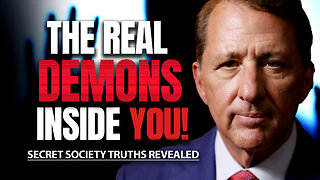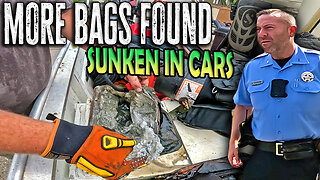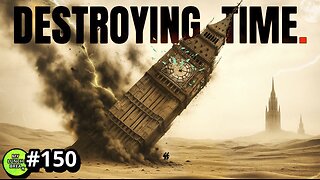Premium Only Content

Episode 3276: Vatican II and the Forgotten Councils
The Catholic Church, unlike any other institution on earth, has endured for two millennia, weathering storms of persecution, schism, heresy, and even corruption from within. Across the centuries, ecumenical councils served as the great anchor of continuity. From Nicaea in 325 to Vatican I in 1870, the pattern was consistent: councils met in times of crisis, defined truth with clarity, condemned error with authority, and ensured that the faith of the Apostles was handed down without dilution or compromise. This was the unbroken rhythm of Catholic history until the 1960s.
In October 1962, under the banner of aggiornamento (updating), Pope John XXIII opened what he called a “pastoral council.” Vatican II would not, he assured the faithful, issue new dogmas or condemn errors in the solemn way councils always had. Instead, it would adopt a new tone, a new style, a new openness to the world. The council fathers were to emphasize dialogue rather than definitions, encouragement rather than anathemas, and adaptation rather than preservation.
At the time, this vision seemed hopeful to many. The 20th century had been scarred by two world wars, the rise of communism, and the decline of Christian influence in Western life. The Church, John XXIII believed, should open her windows and let in the “fresh air” of the modern world. Vatican II, he said, would not be about condemning but about proposing, not about clinging to the past but about meeting the present.
But in the years that followed, it became clear that Vatican II was not simply a shift in tone. It was a rupture a break with the very councils that had given the Church her stability. Instead of reaffirming and building upon Nicaea, Florence, Trent, and Vatican I, Vatican II ignored them, contradicted them, or left them behind. The Church had never seen anything like this.
A Council Unlike Any Other
To appreciate the novelty of Vatican II, one must first understand what came before. Councils were never optional exercises in “pastoral style.” They were serious, solemn events where bishops gathered under the authority of the pope to preserve, not reinvent, the faith. Nicaea defended Christ’s divinity against the Arians. Trent crushed Protestant innovations and safeguarded the sacraments. Vatican I defined papal infallibility and condemned modernist theories of evolving dogma. Each council was marked by a profound sense of responsibility to hand down what was received, not to innovate.
Vatican II, however, presented itself as something new. It produced sixteen documents, none of which carried the weight of a solemn dogmatic definition. Instead, they were called “pastoral constitutions,” “declarations,” and “decrees.” Yet, in practice, they became more transformative than any dogmatic decree in Church history. The liturgy was dismantled and remade. Catechesis was rewritten in ambiguous terms. Ecumenism and interreligious dialogue introduced a new spirit of religious relativism that earlier councils had explicitly condemned.
Here lies the paradox: Vatican II claimed no authority to define doctrine infallibly, yet its practical consequences were more radical than any council before it.
The Forgotten Councils
To understand the rupture, we must look back at the councils Vatican II disregarded.
• Nicaea (325): Proclaimed Christ’s divinity and the uniqueness of His Church. Vatican II’s Nostra Aetate, by praising elements of truth in non-Christian religions, blurred this uniqueness.
• Florence (1438–1445): Explicitly declared “outside the Church there is no salvation.” Vatican II’s Lumen Gentium and Unitatis Redintegratio introduced language suggesting other Christian communities are “means of salvation.”
• Trent (1545–1563): Condemned Protestant liturgical innovations, safeguarded the Mass, and defined justification with precision. Vatican II’s Sacrosanctum Concilium opened the door to the Novus Ordo, which bore striking similarities to Protestant services.
• Vatican I (1869–1870): Declared that doctrine is immutable and warned against modernist ideas of “evolution.” Vatican II’s spirit of aggiornamento effectively enshrined the very principle Vatican I condemned.
Each of these councils had spoken with clarity. Vatican II, by contrast, preferred ambiguity. But in that ambiguity lay its revolutionary power.
The Crisis that Followed
The fruits of Vatican II are visible to all. In the decades after the council:
• Mass attendance collapsed, especially in the once-Catholic strongholds of Europe.
• Seminaries emptied, and vocations plummeted.
• Religious orders once filled with zeal were reduced to near extinction.
• Catechesis became confused, watered down, and sometimes openly heretical.
• The liturgy, stripped of its ancient forms, left generations of Catholics with little sense of reverence or continuity.
The Church, once the firm rock of doctrine, came to look more like a dialogue society, eager to please the modern world but unable to hold fast to her own identity.
This crisis was not simply a coincidence of history. It was the fruit of a rupture. As Archbishop Marcel Lefebvre famously warned, “No authority, not even the highest in the hierarchy, can compel us to abandon or diminish the Catholic faith.”
Continuity Denied
Defenders of Vatican II often insist that it must be interpreted through a “hermeneutic of continuity,” as Benedict XVI phrased it. But the problem runs deeper. Continuity cannot be manufactured after the fact. The council documents themselves, when compared side by side with Nicaea, Florence, Trent, and Vatican I, show a different spirit a spirit of novelty, ambiguity, and rupture.
This book is not merely a critique of Vatican II in isolation. It is an appeal to memory. The Catholic Church does not live by novelty but by tradition. To forget the councils of the past is to forget the very identity of the Church herself. Vatican II did not simply add to tradition; it contradicted it. And in doing so, it set the stage for the confusion and collapse we now endure.
The Task of the Faithful
Yet, the story does not end in despair. For even as Vatican II unleashed confusion, the perennial teachings of the Church remain untouched. Truth cannot be erased by ambiguity. Dogma cannot be undone by pastoral decrees. The faithful remnant who cling to tradition bear witness that the gates of hell will not prevail.
This book seeks to recover the forgotten councils and to place Vatican II in its true light not as a flowering of continuity but as a rupture demanding correction. Only by remembering what the Church has always taught can we find the path forward.
The tragedy of Vatican II is that it set itself above the very councils that preserved Catholic faith for centuries. The hope for Catholics today lies in reclaiming those councils, relearning their decrees, and restoring the unbroken continuity of the faith.
As St. Paul wrote to the Galatians, “But though we, or an angel from heaven, preach a gospel to you besides that which we have preached to you, let him be anathema” (Galatians 1:8). That standard does not change with time, fashion, or pastoral style.
-
 LIVE
LIVE
BlackDiamondGunsandGear
4 hours agoEBT Apocalypse? / Snap Down SHTF / After Hours Armory
225 watching -
 14:05
14:05
Sideserf Cake Studio
15 hours ago $4.73 earnedHYPERREALISTIC HAND CAKE GLOW-UP (Old vs. New) 💅
26.4K4 -
 28:37
28:37
marcushouse
17 hours ago $1.43 earnedSpaceX Just Dropped the Biggest Starship Lander Update in Years! 🤯
7.87K5 -
 14:54
14:54
The Kevin Trudeau Show Limitless
3 days agoThe Hidden Force Running Your Life
73.5K11 -
 LIVE
LIVE
DLDAfterDark
4 hours agoIs The "SnapPocalypse" A Real Concern? Are You Prepared For SHTF? What Are Some Considerations?
145 watching -
 19:58
19:58
TampaAerialMedia
15 hours ago $0.32 earnedKEY LARGO - Florida Keys Part 1 - Snorkeling, Restaurants,
10.7K7 -
 1:23
1:23
Memology 101
2 days ago $0.83 earnedFar-left ghoul wants conservatives DEAD, warns Dems to get on board or THEY ARE NEXT
12.2K45 -
 3:27:27
3:27:27
SavageJayGatsby
5 hours ago🔥🌶️ Spicy Saturday – BITE Edition! 🌶️🔥
45.4K -
 26:09
26:09
Exploring With Nug
15 hours ago $0.06 earned13 Cold Cases in New Orleans What We Discovered Beneath the Surface!
45.1K15 -
 27:39
27:39
MYLUNCHBREAK CHANNEL PAGE
10 hours agoDestroying Time.
128K31